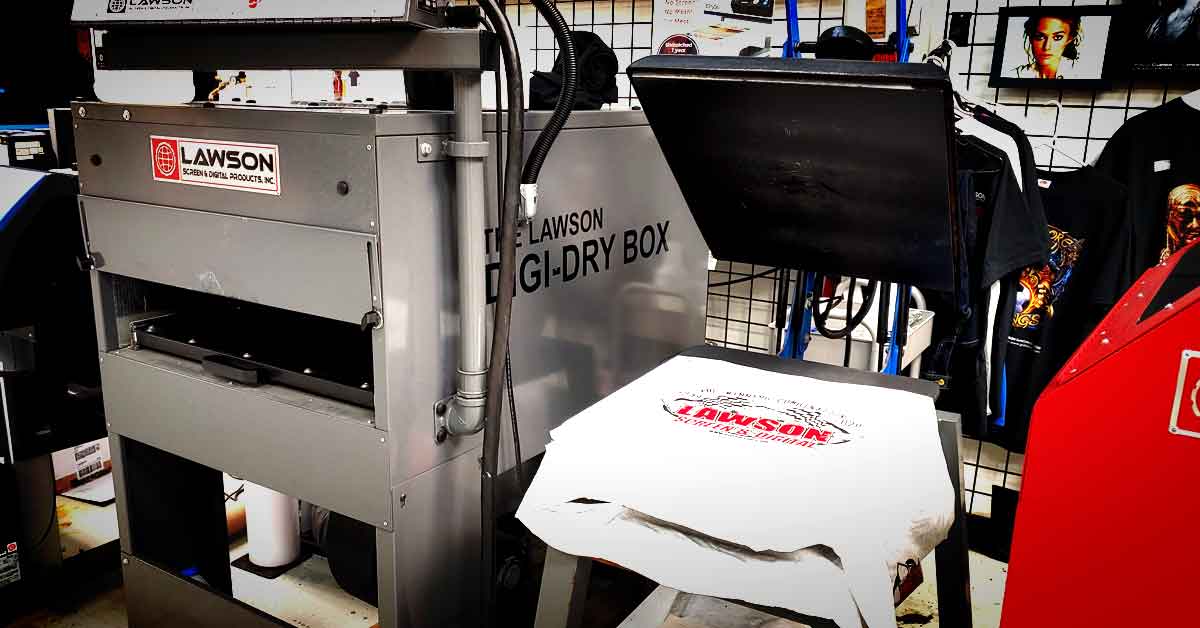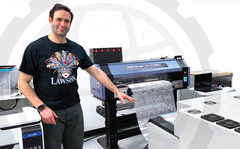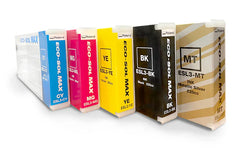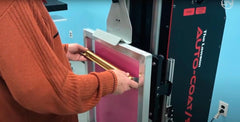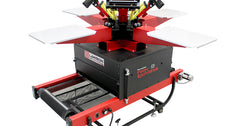Choosing the Right Method for Drying Your Direct to Garment (DTG) Prints: Curing with Conveyor Dryers vs Drying with Heat Presses
Properly drying direct-to-garment ink provides a high quality finished garment that keeps your customer happy and placing repeat orders. That is why it is essential that you establish a method to cure ink on your garments. There are two ways to dry DTG ink on garments. The first is to use a conveyor dryer, and the other is with a heat press. Deciding on which is the best method to cure DTG ink depends on a few factors, namely your production requirements (how many shirts you want to produce),your budget and your space requirements. Understanding the pros and cons of each drying method is key to selecting the best one to fit your business model.
A Brief Tip on Curing DTG PreTreat Solution Having the right pretreatment solution is critically important for getting the best direct-to-garment print. Think of pretreat as the foundation to your DTG house - it creates a solid base upon which you build everything else.
Most people use the same conveyor dryer or heat press for curing pretreat and DTG inkjet ink. If your biggest concern is production speed, consider dedicating one tunnel dryer or heat press for just pretreat and one for ink.
Watch How Much DTG Pretreat To Use For Dark Garments to learn how to properly pre-treatDrying DTG Prints with a Conveyor dryer A conveyor dryer is the best choice for drying prints if image color, print vibrancy and production speed are your top priorities. If you are new to garment decorating, a conveyor dryer is a large heating chamber, also called a tunnel dryer, with a conveyor belt that moves garments through a heat chamber. If you are not sure which conveyor dryer is right for you, read about 3 Practical Tips for How To Choose the Best Screen Printing Dryer.
As the t-shirt passes through the chamber, infrared heat and vortex air quickly push the heat onto the ink and through the printed image, rapidly curing the shirt. You achieve better results with a conveyor dryer that moves large amounts of air. High velocity air flow is vitally important as DTG ink (and pretreat) cure when moisture is removed. If you are a screen printer, DTG ink cures very similar to printing with water-based ink. This means a dryer with heat but little to no air movement will not provide desired results. Since a dryer combined heat and air the printed image looks better once it is dry with brighter and more vibrant colors.
The conveyorized dryer speeds up DTG production and reduces labor requirements. Since a conveyor dryer’s belt is always moving there is no down time between when your DTG printer finishes printing and when you start drying the shirt. Simply laying your garment on the belt “starts” the drying process. At that point, the operator can return to their DTG machine or machines making sure there is minimal production downtime. There is no need for someone to stand at a heat press and then remove the cured shirt. When your garment comes out finished on a conveyor, it can simply fall into a box to be sorted and sent out later. This is a great labor saving feature that is not available with a heat press.
Drying Using Only a Heat Press The most economical option for drying DTG prints is a heat press. For this reason, it is the most popular among startups with a tight budget. For those working out of their home or confined spaces, a heat transfer press takes up a minimum amount of room and sits on a table or rolled out of the way on a stand.
When purchasing a heat press, you will have to decide between a clamshell and swing-away press. Clamshells are lower cost heat presses and require less room to operate since the heating element goes up and down. The downside is clamshells do not always have the most even pressure when compared to a swing-away. With swinging heat presses, the heating element pivots/swings to the side. This movement means the area to the sides have to be open so the heat press cannot be put in a corner. Swinging heat presses achieve a very constant pressure across the entire heating element.
An advantage of a heat press is it cures your pre-treatment and matts the fibers down. Less fibers sticking up creates a smoother printing area for the DTG ink, resulting in a better looking print with less fibrillation (fibers sticking up in your print). Pro tip: some people who use a conveyor dryer to cure pretreat solution will heat press their garment for a few seconds to help matt down the fibers prior to printing.
There are a few downsides to using a heat press. When curing with a heat press, your final DTG print is not nearly as bright and vibrant as with a conveyor dryer. This is because the heating element smashes the image, pressing the ink into the fiber, muting the colors.
The second downside to using a heat press is time. If you are doing production DTG printing or interested in scaling up, a heat press will be one of your first bottlenecks (the other being pretreat). Heat pressing is labor intensive and oftentimes forces your DTG operator to be printing and drying.
Choosing Between a Conveyor Dryer and a Heat Press Depends on Your DTG Goals Determining whether a conveyor dryer or heat press makes the most sense for your DTG printing operation depends on your goals. A careful analysis between production needs, quality, space requirements and cost goes a long way in ensuring you will be successful.

